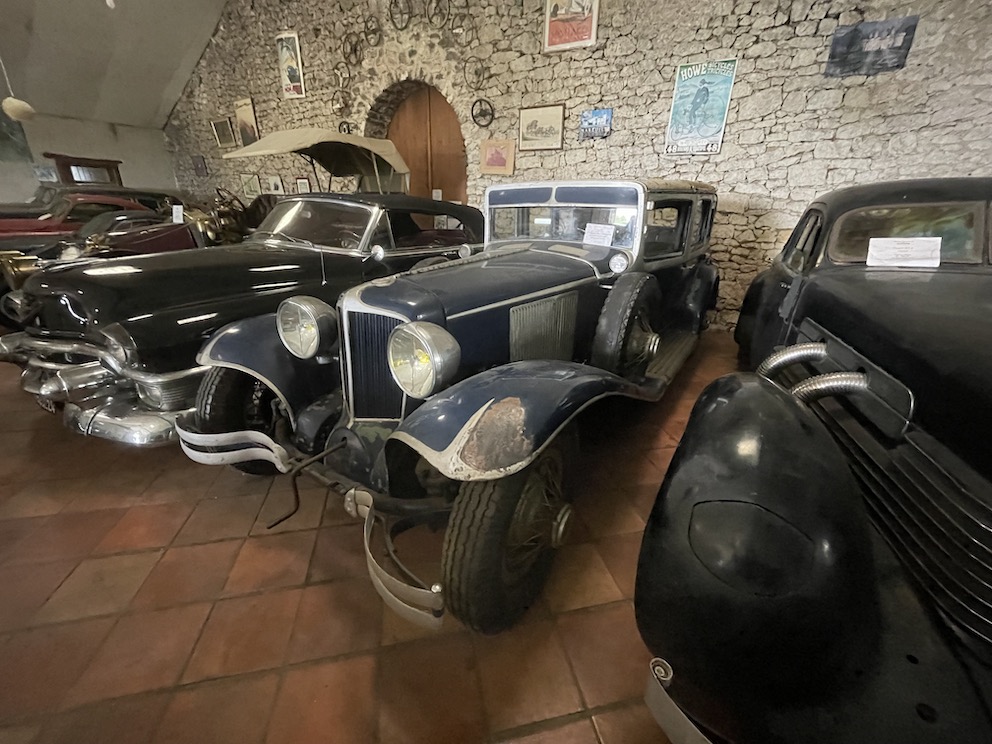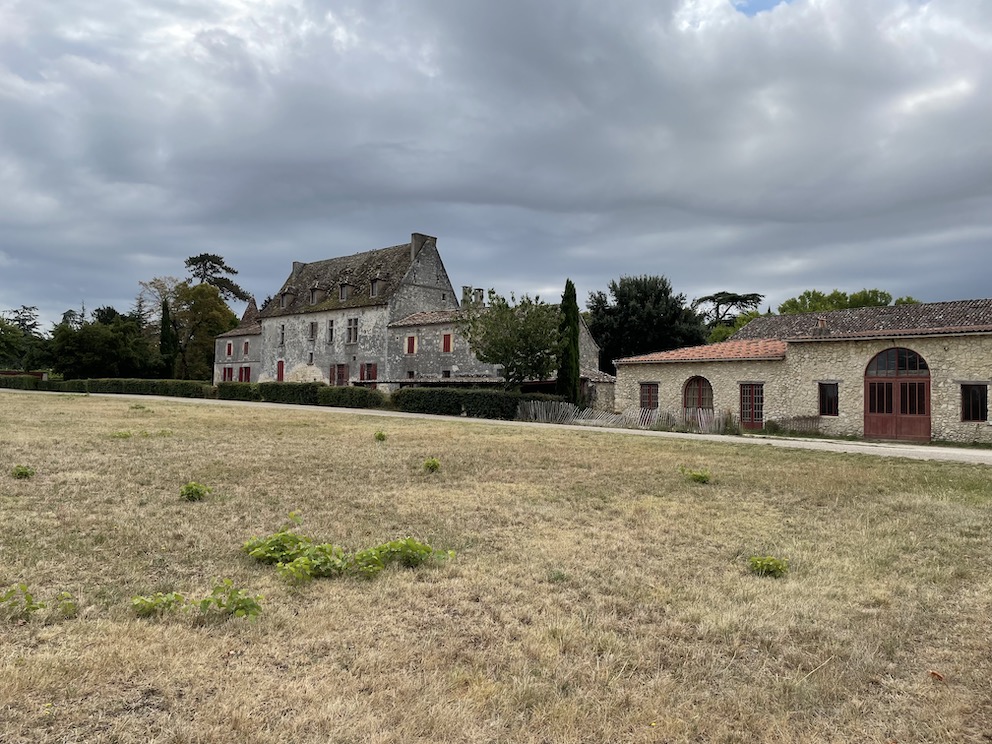

History of the Collection Bertrand de Passemar
Born in 1950, Bertrand de Passemar started tinkering with cars at a very young age. He got a Delage at the end of the 1960’s and drove it for a while before selling it. He didn’t know it yet, but he had just caught the vintage car virus, which would lead him to develop his collection. At a time when classic cars did not interest many people except for enthusiasts, he gradually built up a fine collection of cars that he restored in the garage established in the outbuildings of his Chateau de Sanxet. French and, English classics but also a few American cars, the collection is growing according to his desires. He likes original cars or those with a history.
Following his tragic death in 2018, an association (Musée de Sanxet de Bertrand de Passemar) was created to preserve and maintain this heritage, and to continue to restore the cars still in their condition. This private collection can only be visited by appointment and is reserved for members of the association. You will have to become a member of the association (but the membership is modest) to have the privilege to discover these cars.
Mes coups de coeur
The Bertrand de Passemar Collection at the Chateau de Sanxet is a selective collection, rather narrow but with some real nuggets. A few favorites to distinguish:
- The setting, you overlook the vineyards and the large room without pillars allows a nice overview of the collection
- The Rolls-Royce Silver Wraith 1949, monumental, which will remind some James Bond fans
- The beautiful selection of Jaguar
- The Citroën Traction Cabriolet and Berline 15-6 cylinders
The Chateau de Sanxet
Situated on a hill a few kilometers from Monbazillac and Bergerac, built by the English, the Chateau de Sanxet has its origins in the Hundred Years War, and takes its name from the village that existed at the time. Vines were first cultivated in the 11th century. The region being very disputed, the castle will know an eventful history until the 15th century. At that time, the vineyard was already exploited as Monbazillac wines. These sweet wines were exported to England and the Nordic countries and were highly prized by the royal courts. In 1619, a family ennobled by Louis the XIII took possession of the estate and the name, which remained in the family until the 20th century. Bertrand de Passemar took over the estate in 1982, whose wife was a descendant of the Sanxet family. He worked at developing the wine production, and will be able to house his growing collection of vintage cars. The castle cannot be visited.

The Cars of the Collection
The cars are displayed in a large room built on a stone wall of an outbuilding. The tiled room is decorated with large frescoes that tell the history of the estate. The cars are grouped trying to respect their common points: American, English prestige, French… The oldest car of the collection is a Clément Bayard of 1911, bought because it was the year of birth of Bertrand de Passemar’s father, car used by the Clément family itself. The car bears an effigy of the Chevalier Bayard, who gave part of the name to the brand. The Collection also owns another Clément Bayard, from 1913.






Other ancestors, but of a very different style, are two small French racing cars from the 1920s/30s, a Ragot Spéciale powered by a compressed 1500 engine, and beautifully restored, and a beautiful Rally in two shades of blue. Other French cars include 2 Citroën Traction, a beautiful red and black cabriolet, and a relatively rare 6-cylinder sedan, a 1938 Panhard Dynamic, a Djet 7, another small French sports car, a 1952 Simca Coupé, one of the very first to be built with an aluminum body by the Facel Metallion company, which will produce the Facel Vega. It is presented next to a Ford Comet, whose bodywork was also manufactured by Facel Metallion. There is almost no model of this version of the Simca coupe left in France.








Bertrand de Passemar also liked English cars, and his selection is particularly refined AC, Bentley, Daimler, Jaguar, Rolls-Royce… What a great world!
The Rolls is a 1949 Silver Wraith, the car of the villain in several James Bond films. Deep leather seats, bar with crystal glasses, and a particularity, the famous Flying Lady on the radiator is kneeling, meaning (according to the legend) that it is driven by its owner! As for the Daimler, it comes from the English court, so we can dream of the illustrious people who could sit on the seats (at the back, no doubt).
On the Jaguar side, there is an interesting sample with an XK 120, a Mk 2, an XJ 4.2L, and 2 E-Types, one of which is a 3.8L “lightweight” coupe that has been “recivilized”. We can also mention a 1959 Lotus Elite and a Lotus 7 replica.










A few American cars complete the collection, notably 2 Cord 812 and L29 still in their original state, and a 1953 Cadillac Eldorado convertible, with its profusion of chrome and its “obus” bumpers typical of that period.
Without being exhaustive, let’s also mention 3 coupes representing the Italian design, with an Alfa Romeo 2600, a Lancia Flaminia and a rare OSI 20M TS, developed and built by OSI on the basis of a Ford 20M, at the request of Ford.
Among the curiosities exhibited outside the cars, there is a Lotus F1 hood, a Ragot motorcycle (same manufacturer as the Ragot Spéciale), an Indian sidecar and a “soapbox” in the shape of a Lotus single-seater from the 1960s.
In another small room, a few Citroën DS and 2CVs accompany a Peugeot 301 which has the particularity of having belonged to the famous singer and actress Mistinguett, as well as a strange Citroën racing prototype from 1923, nicknamed Tank because of its “aerodynamic” bodywork.







The reserves
Next to the exhibition room, the former stables house the collection’s reserves. No cars, but many old objects that are waiting to be restored and displayed. Horse-drawn carriages, bicycles (including a tandem from the beginning of the 20th century and a tricycle with its wicker seat), baby carriages, weaving, sewing or spinning looms… which would complete the historical aspect of the museum.
Another curiosity for film buffs is that the Chateau de Sanxet was used as a set for the filming of “Jappeloup” (a Christian Duguay film starring Guillaume Canet), especially the stables, the bar and the riding school.
The Bertrand de Passemar Collection also has a large garage equipped for the complete maintenance of the vehicles of the Collection.





